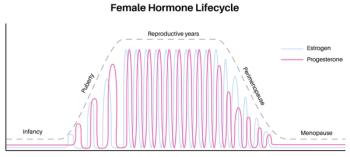
WTC: No Standard for Thrombosis Prevention in Living Liver Donors
BOSTON -- Although thrombotic events among living liver donors are rare, the there is no agreement among transplant centers about the best approach to preventing them.
BOSTON, July 28 -- Although thrombotic events among living liver donors are rare, the there is no agreement among transplant centers about the best approach to preventing these serious complications.
Among 769 liver transplants using tissues from living donors in 2003 and 2004 at 26 centers, there were nine reported cases of thrombotic events in the donors, an incidence consistent with that reported in the literature, reported Angela Lambing, MSN, and colleagues, of the Henry Ford Health System in Detroit.
What was inconsistent, however, were the preoperative screening of donors, postoperative management, and discharge management, Lambing said at the World Transplant Congress here.
She and her colleagues were first prompted to look at risk factors for thrombosis in 2002, when a 36-year old male donor at their center developed a deep vein thrombosis five weeks after surgery.
"We wanted to look at what his thrombophilia risk was, did thrombophilia testing on him, and found out that he had an MTHFR gene which has a very loose association with thrombophilia risk," Lambing said.
A literature search revealed fewer than 10 studies of complications in living liver donors, and no information about what type of preoperative donor screening for thrombotic factors is performed, she added.
In addition, during routine postoperative evaluations of donors, they discovered significantly sub-normal levels of protein C, protein S, and antithrombin III, all of which are involved in the clotting cascade, and are associated with thrombosis in genetic deficiency states.
"The other thing we identified was that factor VIII level was significantly elevated due to the reactive process in a thrombotic event," Lambing said. "The normal range is 100 to 150%, and one of our cases went as high as 650% immediately after surgery, and it took four to six weeks to normalize." As factor VIII is needed for sustained generation of thrombin, increased levels could lead to thrombosis.
Yet when they turned to the literature for information, and to a survey of transplant centers for information about the best prophylactic regime and its duration, they found a wide variety of options for immediate postoperative management, ranging from mechanical compression and early mobilization used by 92% of centers, to unfractionated heparin (40%), compression stockings (38%), stair-stepping (15%), low-molecular-weight heparin (5%), or cardio-exercises (4%).
In all, 26% of the centers used mobilization and compression stockings as their only form of thromboprophylaxis. The authors also could not find information about the duration of unfractionated heparin use.
There were similar wide variations in post-discharge management of patients to reduce thrombosis risk, ranging from mobilization in 57% of centers, to cardio-exercises prescribed by 13%, and stockings, stair-stepping, unfractionated heparin, and low-molecular-weight heparin, all at less than 10%.
Overall, they found that thromboprophylaxis protocols are not consistent, that there is no scientific evidence to support the use of one protocol over another, and that "validation and evaluation of a consistent protocol is needed to optimize the safety of a living donor," Lambing and colleagues noted.
Newsletter
Enhance your clinical practice with the Patient Care newsletter, offering the latest evidence-based guidelines, diagnostic insights, and treatment strategies for primary care physicians.

























































































































































































































































































